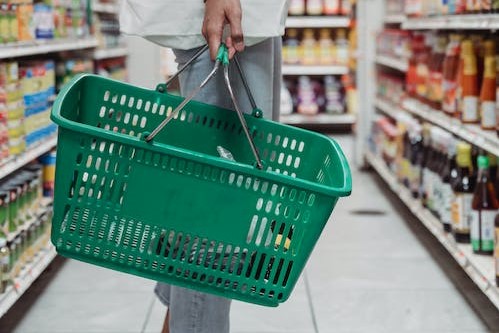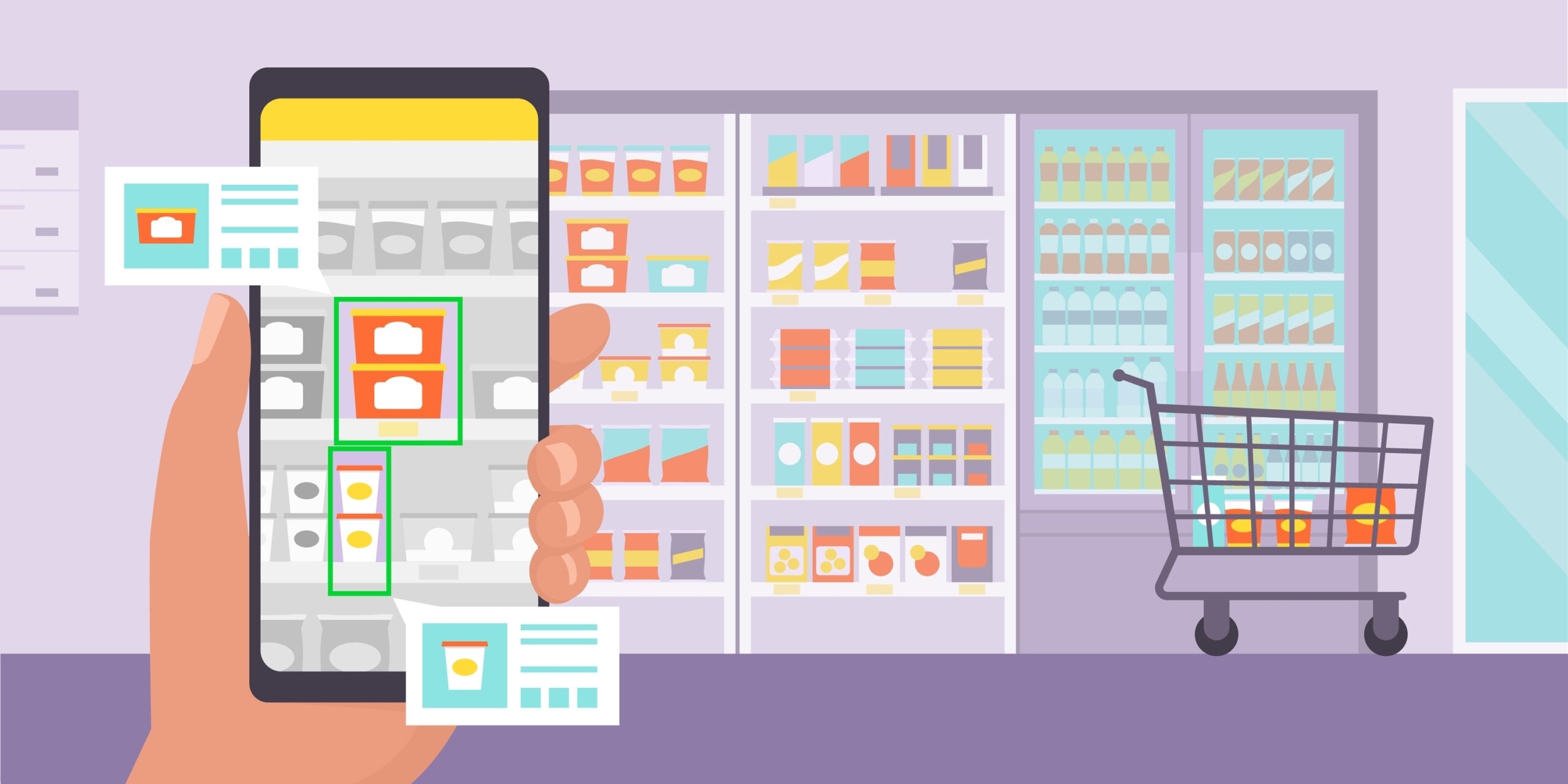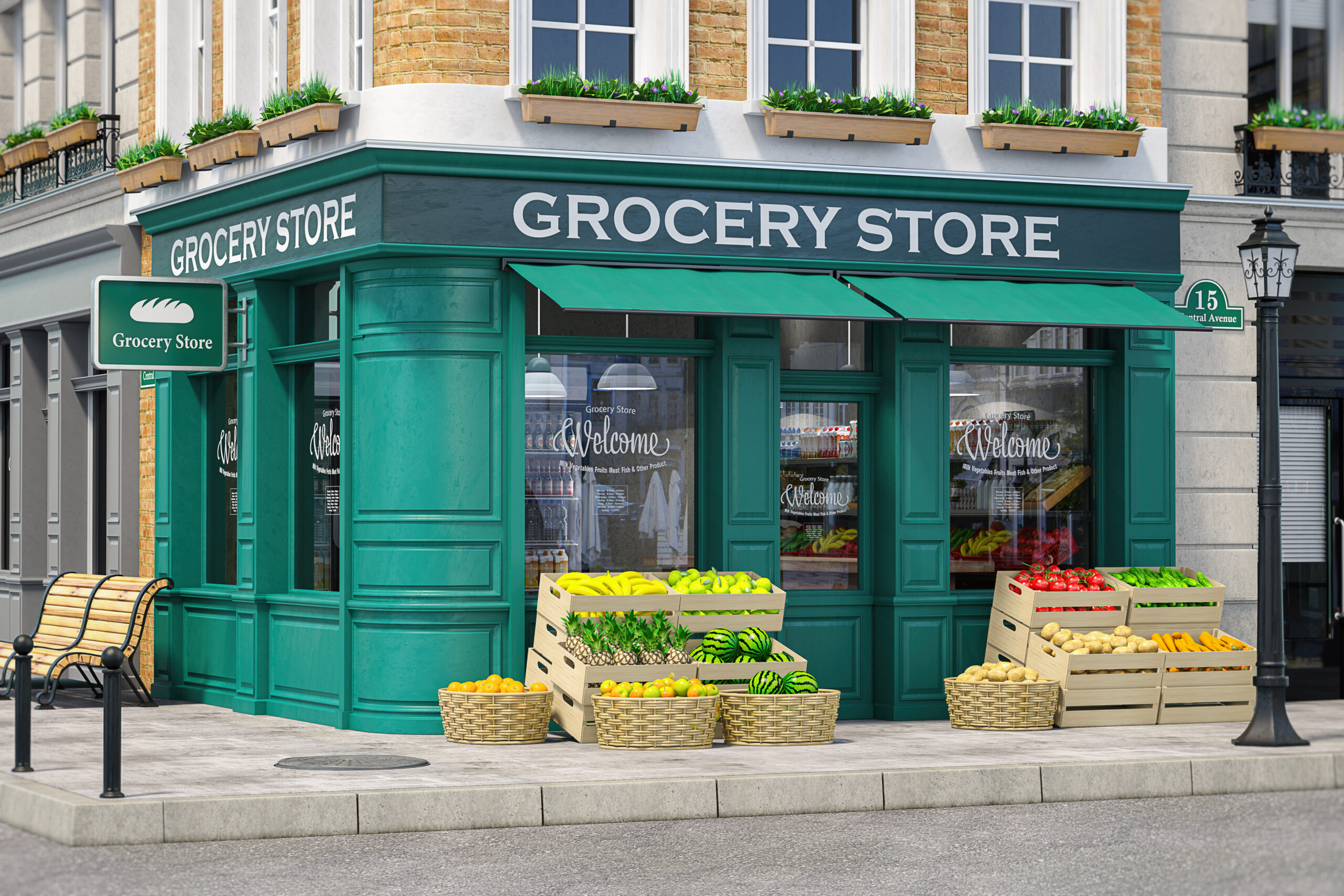As the modern retail landscape becomes more competitive than ever, retailers and brands are looking for an edge to understand what shoppers are doing and why they make the choices they do. While many different tools and strategies are available to acquire this insight, today we’re spotlighting basket analysis. Basket analysis is a critical component of understanding shopper behavior, providing insights into what items are frequently purchased together and what might prompt a shopper to purchase in the first place.
This blog post will explore how basket analysis can provide shopper behavior insight, what types of data can be gleaned from this analysis, and how InContext’s 3D simulation software can be used to understand transaction data further.
What is Basket Analysis?
First, let’s start with the basics. Basket analysis, also known as market basket analysis, is a technique used to understand customer purchasing behavior, what items are being placed in shopping baskets, and the relationships between those items. Data analysis can improve product placement, understand customer needs and wants, optimize promotions, and more. There is so much more to look at than just the total number of transactions per product. Much of basket analysis involves identifying association rules, a machine learning method based on data science for identifying relationships between two or more variables, or in this case, products. In the following section, we’ll explore those relationships and why they’re important.
There are two main types of data that are usually gathered from basket analysis:
- Association data: This type of data shows which combinations of products are purchased together. Suppose you know that customers who purchase item A also tend to buy item B. In that case, you know these items are related products and can use this information to improve product placement or create product recommendations by placing this group of things next to each other or along the same store path, cross-selling when necessary. For example, suppose a store has a corner display of tortilla chips. In that case, the association data may indicate a display for salsa on the right-hand side would be an intelligent decision.
- Sequence data: Sequence data sets show the order in which items are purchased. You can use this information to understand the customer journey and optimize the path to purchase. If shoppers tend to make their way from one specific section to the next, this informs the way retailers organize the store layout.
Basket analysis is a way to understand shopper purchase combinations and patterns. It also evaluates the basket size, value, and time of purchase. So many factors play a role in the shopper’s decision-making process and can be used to improve the shopping experience. With this method, store owners or online retailers can identify popular items, group them together, and offer promotions on those items to drive sales.
Common metrics for extracting shopper behavior insight
Basket analysis works best in combination with other data sources and metrics. This section will cover the shopper behavior metrics used in conjunction with basket analysis that data scientists and retail merchandising experts have developed. These provide a more comprehensive picture of customer behavior and thought processes.
Findability
As the name suggests, findability is the ability of shoppers to find what they’re looking for in your store or website. If they can’t find what they’re looking for, they’re likely to give up and go elsewhere. That’s why store layout is so crucial.
There are a few things that you can do to improve findability:
- Make sure that products are placed in strategic locations.
- Use signage to guide shoppers to the correct aisle or section.
- Train your employees to help shoppers find what they’re looking for.
A findability test in virtual reality can help you optimize your store layout for maximum impact. We can help you gather test subjects who will enter your VR store and try to find specific products. We’ll track their movements and see if they excel at finding the product and how long it takes.
Browse time
Another crucial metric for understanding shopper behavior is browse time – the amount of time spent looking at an item before making a purchase. This metric can help you understand how shoppers interact with products and make choices. It also lets you comprehend how changes you bring to categories, shelves, and packaging affect shopper behavior.
Browse time data can be gathered using methods like heat mapping, eye-tracking, and retail analytics software. For example, you can collect information about the time shoppers browse in a particular category. Generally speaking, this metric influences unit sales, conversion rate, and average basket value.
As for signage, if you want to increase the time shoppers spend in a particular area, you must ensure that your signs are placed strategically. You can also try different sign designs to see which are most effective in grabbing shoppers’ attention.
Conversion Funnel
A conversion funnel is a series of steps shoppers take before purchasing. This could be anything from visiting your store or website to adding an item to their cart and checking out. By understanding the conversion funnel, retailers and brands can identify where shoppers are dropping off and make changes to improve the shopping experience.
In other words, it’s the customer journey. We can identify three key customer journey stages when it comes to retail shopping:
Consideration
The first stage is when shoppers are considering making a purchase. They pick up a product from the shelf, look at the price, and read the label. Retailers and brands must ensure that products are placed strategically, and that pricing is clear. This is also an excellent time to ensure that your product packaging is eye-catching and informative.
At this stage, the customer goes through an inner debate. They try to rationalize the purchase and ask themselves questions like:
- Do I need this product?
- Can I afford this product?
- What are the consequences of this purchase?
As a retailer or brand, you should analyze how long they take to make those decisions and if they decide to add the product to their cart or put it back on the shelf. Are they hesitating? Do they need more information?
You can use this data to improve the shopping experience by providing clear pricing, placing products in strategic locations, and designing informative and eye-catching packaging.
Conversion
If they do decide to add the product to their cart, they’ve moved on to the second stage: conversion. Conversion refers to the action of turning shoppers into buyers. This is when they make the purchase.
At this stage, calculate the purchase rate. This will show how many shoppers convert instead of replacing the item with an alternative. If the number is low, something is preventing shoppers from completing their purchases. It could be anything from long lines at the checkout to a lack of payment options.
Market Penetration
The third stage of the customer journey is market penetration. This refers to the overall amount of shoppers buying your product. Market penetration can be measured in frequency (how often they purchase your product) or amount (how much they spend on your product).
It’s good to have one customer who buys your product weekly and spends $100 each time. But it would be even better to have ten of them. In other words, we measure how well a specific product penetrates the target market.
Shopper journey
Just like websites use scroll tracking to understand how far users read on a page, retailers can use the shopper’s journey to understand how customers visit the store. The shopper’s journey is the path a customer takes as they move through your building, starting from the store’s entrance to the checkout.
You’ll find valuable insights about which categories are being visited, in what order, and for how long. You can use this data to improve the shopping experience by emphasizing the most popular areas or reconfiguring the less popular ones to drive more traffic.
With InContext, you can also view more detailed data about specific shopper behavior, such as whether they backtrack or take detours. You can then create a heat map of your store, showing you the most popular routes shoppers take.
POP locations
Most stores have a point of purchase (POP) display. These can be anything from cardboard cutouts to more elaborate displays with lights and sound and are usually located strategically near the entrance or checkout.
POP locations are essential because they can have a significant impact on sales and are simply a way of upselling products to shoppers. In addition, a well-designed POP display can increase the likelihood of a shopper giving in to impulse buying. That’s why retailers are always looking for ways to optimize their POP locations.
You can test different POP locations in virtual reality to see which ones are most effective. For example, perhaps you’ll realize that the location near the entrance isn’t as visible as you thought. Or maybe you’ll find that a certain type of display is more likely to catch shoppers’ attention.
Virtual shopper decision tree
When trying to understand shopper behavior, it can be helpful to think of it in terms of a decision tree. At each fork in the tree that forms new branches, the shopper has to decide: do they go left or right? You can use a virtual shopper decision tree to map out all the possible paths a shopper could take in your store. For example, what would they do if their desired product was out of stock? What would they do if they can’t find what they’re looking for? In addition, you can assess attitudinal and behavioral motivations to understand what drives shoppers to make their own decisions.
Submit a questionnaire before and after your focus group’s virtual shopping experience. Then, you’ll see how the shopper’s decision tree changed after they had a chance to explore your VR store.
Consumer behavior models
Finally, a consumer behavior model is a tool that dives into the psychology behind shopper behavior. Retail industry experts have looked to psychology to obtain a deeper understanding of consumers, using these models to help explain why shoppers make the decisions they do. While there are many different models, some of the most popular ones are:
- Psychoanalytical model: The psychoanalytical model was developed by Sigmund Freud and is based on the idea that there are three different parts to the human psyche: the id, the ego, and the superego. Regarding consumer behavior, these instincts drive our desire to purchase things, although they don’t always agree with what’s best for us.
- Sociological model: We’ve all heard the phrase “keeping up with the Joneses.” The sociological model of consumer behavior posits that people purchase things to fit in with their social groups. In other words, we want to own the same things as our friends and neighbors to feel like we belong.
- Maslow’s Hierarchy of Needs: This model, developed by psychologist Abraham Maslow, posits that certain needs must be met before a person can focus on other things. The needs are arranged in a hierarchy, with basic needs at the bottom and complex needs at the top. Shoppers are motivated to satisfy their basic needs, such as food and shelter, before they can focus on more complex needs, such as self-actualization.
To read more about the various traditional and contemporary consumer behavior models, we extensively cover this topic in our past blog post. While these models are helpful in understanding the complexities of shopper behavior, remember that they’re more of an antecedent to modern methods rather than recommended models. VR testing relies on and remains within the parameters of numeric data from current shoppers to inform us about shopper behavior, with basket analysis being a vital component of that data. With virtual reality, you can question and observe shoppers in a controlled environment to see which retail strategies and marketing campaigns best apply to their behavior. When you leverage basket analysis facilitated by VR testing, you never have to guess how shoppers think because you can access accurate shopper insights.
VR Testing Method
InContext’s 3D simulation software provides a way to test different store layouts, merchandising strategies, and promotions in a virtual environment before implementing them in the real world. Physical prototypes and mock stores can be expensive, resource-intensive, and time-consuming to create. In contrast, VR simulations offer a more efficient way to test different concepts. By utilizing realistic visualizations of in-store setups, VR testing is a powerful tool for understanding shopper behavior. It allows retailers and brands to see how shoppers interact with their products and make choices in a controlled setting. In addition, by testing different scenarios in a virtual store, retailers and brands can gather data on product placement, traffic flow, dwell time, and conversion rate.
3D simulations also allow businesses to test source insights from online respondents. For example, retailers and brands can gather data from a much more comprehensive range of shoppers, including those who might not be comfortable with providing feedback in a focus group or survey. Note that these results are often more accurate since shoppers are more likely to act naturally in a virtual environment than they would in a hypothetical scenario.
Additionally, the use of 3D simulations allows for more detailed feedback, as you can observe the shopper’s every move. Where did they go first? What drew their attention? What did they pick up and put back? Brands and retailers can use these insights to improve the shopping experience.
Basket analysis: An indispensable tool
In our modern world, when e-commerce, Amazon, recommendation engines, data mining, and increasingly virtual retail experiences are becoming more commonplace, it’s easy to question the relevance of strategies focusing on in-store merchandising. But as experienced veterans of the industry, we’ve observed how basket analysis is still an indispensable part of this process and provides retailers and consumer goods brands with dynamic business intelligence.
Basket analysis is a critical component of shopper behavior insights. While there are various other methods of obtaining valuable shopper insights, it fills a necessary niche of knowledge that brands and retailers cannot afford to overlook. If you want to improve your retail strategy, InContext Solutions has the tools and experience to help. We’ve helped our clients increase sales, reduce costs, and enhance the shopper experience. Contact us today to learn more about what we can do for you.




